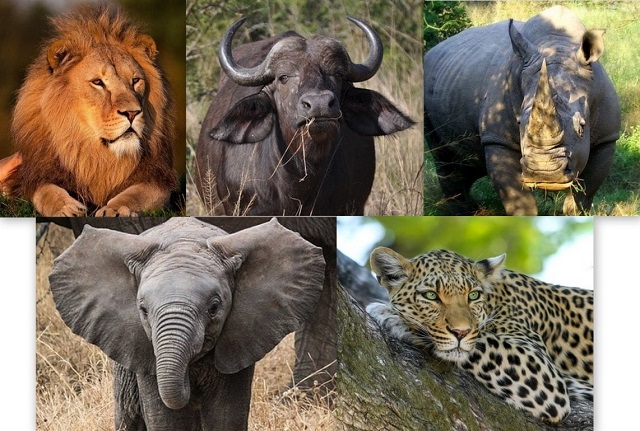Of banned party symbols and emblems

Yoliswa Dube-Moyo
FOLLOWING the Zimbabwe Electoral Commission’s (Zec) warning that aspiring candidates for the July 30 harmonised elections who would use banned symbols as party emblems would be disqualified at the nomination court last week, the curious question remained; “Why are these symbols prohibited anyway?”
To the simple mind, the prohibited symbols are merely a grouping of animals, birds, plants and tools and there should be no limit to what parties can use to identify themselves, right?
The banned symbols include the elephant, buffalo, lion, rhinoceros, snake, leopard, cheetah, owl, cobra, griffon, birds of prey such as the eagle and the secretary bird, a laurel or wreath, the flame lily, flaming torch, sword and axe.
The question became even more curious when Zec officials themselves could not explain why the symbols were banned.
Bulawayo elections officer Mr Innocent Ncube said according to the law, the 15 symbols were prohibited from being used by parties and Zec would immediately reject any forms that came with prohibited symbols attached on them although he could not give the reason why the symbols were prohibited.
“As Zec we’re implementing the law as it is. About 15 symbols are prohibited from being used by any political party according to section 146 of the Electoral Act, Chapter 213. These symbols include the elephant, buffalo, lion, rhinoceros, snake, leopard, cheetah, owl, cobra, griffon and birds of prey such as the eagle and the secretary bird.
“Other prohibited symbols include a laurel or wreath, the flame lily, flaming torch, sword and axe,” he said.
Mr Ncube said Zec checks for these symbols when political parties submit letters notifying them about their intentions to contest in elections and also check when candidates submit their nomination papers.
“When we see any of the prohibited symbols, we immediately reject the papers and ask the political parties to use symbols that are allowed.
“On the papers, there’s a section where candidates are expected to attach or draw pictures of their party symbol. We therefore make sure that the symbol is not a prohibited one,” he said.
The nomination process proceeded with little incident. A significant number of candidates were successfully nominated with a record 23 people having successfully filed nomination papers to contest as presidential candidates. Now the electorate waits patiently for July 30 to cast their votes.
Renowned historian and culturist Mr Pathisa Nyathi said a number of factors could have contributed to the banning of these symbols.
“From an African point of view for example, an owl is associated with witchcraft. A snake can equally be associated with witchcraft. Also, depending on the type of snake, it could be related to ancestral spirits. Because we’re Africans, we can’t rule out what the government of the time was thinking when this piece of legislation was enacted,” said Mr Nyathi.
He said some of the animals that are prohibited as party emblems such as the lion, elephant and rhino are part of the Big Five and are generally taken as being of national significance.
“Some of these animals, birds and plants are of national significance therefore they can’t be reduced to something lesser; a political party is lesser because only a certain number of people are associated with a political party. But if something is of national significance, we all have to respect it, regardless of who you are and what political party you support,” said Mr Nyathi.
The banning of certain symbols is common across the world.
During the Red Scare of 1919-20 in the United States, many states passed laws forbidding the display of red flags, including Minnesota, South Dakota, Oklahoma, and California although in Stromberg v. California, the United States Supreme Court held that such laws were unconstitutional.
Other socialist and left-wing related symbols, while not officially prohibited by law (as democratic socialism itself remained acceptable in the country) are still widely condemned by the Indonesian people and considered as being closely related to Communism in general. These include the red star, the socialist heraldry, the red flag, and anthems or slogans such as The Internationale and “Workers of the world, unite!”
On the other hand, symbol banning is not restricted to politics but has spilled over to other facets of life including religion.
In 2010, France became the first country in Europe to ban the full Muslim veil in public spaces. France has also seen legal wranglings over Christian symbols in public places, such as in 2016 when courts ordered a town in eastern France to remove a statue of the Virgin Mary from a public park.
During the 2017 election campaign, the candidate for the anti-immigration Front National, Marine Le Pen, proposed a complete ban on all religious symbols in public places.
Australian Defence Force Lieutenant General Angus Campbell in his current role as army head issued an order banning death symbols, instancing the pirate skull and crossbones, the Phantom or Punisher symbols, and Spartans and the Grim Reaper. He declared in his directive that such emblems were “at odds with army values and the ethical force we seek to build and sustain”.
Zec Commissioner Dr Qhubani Moyo said legislation to prohibit certain symbols for use as political emblems was enacted to help conserve birds and animals of prey.
“Also, candidates can’t associate themselves with symbols of a violent nature. This piece of legislation has been there long before some of us joined these institutions and it was enacted for a good cause,” he said.











Comments